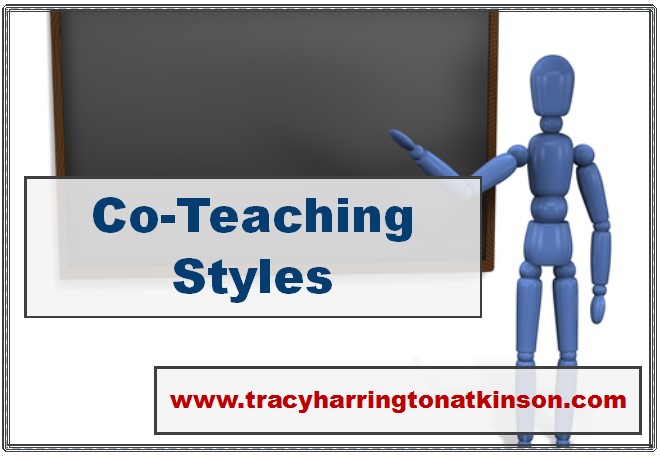
Four different style of co-teaching exist.
Co-teaching and collaboration are essential components of a successful learning environment. These teaching techniques can be difficult, hard work and require give and take between teaching professionals (Webster, 2010). Yet each of these are also essential to the implementation of differentiated learning (Thousand, Villa & Nevin, 2007).
Cushman (2004) explains the four different styles of co-teaching. These styles are supportive, parallel, complementary and team. Supportive co-teaching occurs when the main teacher has other professionals emphasize the lead teacher’s instruction. The benefit in this arena is the ability to maximize the skills of many professionals to meet specific needs. It also helps to focus students through techniques which are geared to their needs such as redirecting.
Parallel teaching is the process when several professionals direct the needs of students concurrently through small groups. This method is used every day through centers, volunteers, paras, etc. The asset to this approach is that it helps teachers to focus on individual students.
Complementary teaching builds on the instruction given by another instructor. The students can recognize that knowledge is a common equation between individuals and student accept certain facts more readily when two adults substantiate the information. The greatest benefit is the students have two teachers to approach with their questions or concerns.
Team teaching is when two teachers accept the responsibility for all the students in the classroom. Although this may not be seen as frequently, it has just as valuable asset as others. Thousand, Villa & Nevin (2007) say “students view each teacher as being equal in their eyes” (p 127).
Prior to implementing and encouraging the use of co-teaching and collaboration within the classrooms, the benefits and drawbacks need to be weighed. The greatest benefit is that this method of teaching lowers the student teacher ratio. It also exposes students to different teaching methods. Additionally, students who learn in co-teaching environments tend to retain more information and are more successful academically (Abdallah, 2009). “Co-teaching also allows teachers to respond effectively to the diverse needs of their students, provides another set of hands and eyes, lowers the teacher-student ratio, and expands the professional expertise that can be directed to student needs” (Friend & Cook, 1996, p 1).
Sources:
Abdallah, J. (2009). Benefits of Co-Teaching for ESL Classrooms. Retrieved from www.academicleadership.org/emprical_research/532.shtml
Barrier, H. (2010). Co-teaching. Retrieved from wik.ed.uiuc.edu/index.php/Co-Teaching#Advantages_for_Regular_Education_Teacher
Cushman, S. (2004). Guide to co-teaching. Retrieved from www.sagepub.com/upm-data/6847_villa_ch_1.pdf
Friend, M & Cook, L (1996). Interactions: Collaboration skills for school professionals. White Plains, NY: Longman Publishers.
Thousand, J., Villa, R. & Nevin, A. (2007). Differentiating instruction: Collaboratively planning and teaching for universally designed learning. Thousand Oaks, CA: Corwin Press.
Webster, J. (2010). Collaboration – – Essential for Success in a Full Inclusion Classroom. Retrieved from specialed.about.com/od/integration/a/Collaboration-Essential-For-Success-In-A-Full-Inclusion-Classroom.htm
By Tracy Harrington-Atkinson
Tracy Harrington-Atkinson, mother of six, lives in the Midwest with her husband. She is a teacher, having taught elementary school to higher education, holding degrees in elementary education, a master’s in higher education and continued on to a PhD in curriculum design. She has published several titles, including Calais: The Annals of the Hidden, Lemosa: The Annals of the Hidden, Book Two, Rachel’s 8 and Securing Your Tent. She is currently working on a non-fiction text exploring the attributes of self-directed learners: The Five Characteristics of Self-directed Learners.

Comments are closed